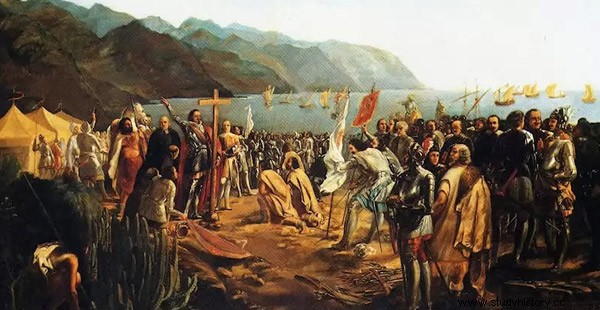Although there were European incursions into the Canary Islands since the 13th century, it was not until the beginning of the 15th century that colonization or conquest began... with the corresponding evangelization of the aborigines and their sale as slaves. But here the evangelizing and economic interests collided:the Church sent its representatives to spread the word of God and get new souls for its cause while Castile and Portugal, in dispute over the territoriality of the islands, captured aborigines, including the recently baptized, to be sold as slaves.

If the natives who had seen the light could also be sold into slavery, this would mean that embracing the new religion would not have a good press among the local population and, therefore, that the ceremonies of collective baptism would decrease. So, Pope Eugene IV took action on the matter and on January 13, 1435, he promulgated the bull Sicut Dudum :
All those who capture, sell or enslave baptized residents of the Canary Islands or those who are freely seeking baptism will be excommunicated. [Of course, nothing was said about those who refused to be baptized, so…]
Thanks to these disputes over the territoriality of the islands between Castile and Portugal, accompanied by a fickle Pope depending on the wind, for 52 days the Canary Islands were Portuguese . Following the bull Romanus Pontifex , issued by Eugenio IV on September 15, 1436, the King of Portugal had the right to conquer the Canary Islands and only 52 days later -applying that "where I said I say, I say Diego"- he issued the bull Romani pontifical which revoked the previous right and declared that the right of conquest corresponded to Castile.
By the way, one of the theories about the origin of the name of the Canary Islands has to do with dogs... and not with canaries. According to Pliny the Elder, on a visit to the largest of the islands by the King of Numidia Juba II , he was struck by the large number of dogs that were there. The king returned to his land with a couple of these dogs and, in addition, he named this place Insula Canaria (island of dogs).
